The Cleanest Ford: '29 Model-A Roadster Paint Correction and Revitalization.
#1
The Cleanest Ford: '29 Model-A Roadster Paint Correction and Revitalization.
Fair warning: this is a very thorough and long documentary on this vehicle, with each step documented and highlighted to show what is possible on a show car. Enjoy 
Early model Ford's likely did more to popularize automobiles than any other car that has ever been on the market. Henry Ford's Model T was a global hit and the Ford Motor Company was able to sell over 15 million of them worldwide. The car made such a name for itself that even today you can stop by the Henry Ford Museum in Dearborn and learn a few things about Model T repairs and manufacturing. Over one hundred years later, even children know this car's name and significance. By the time 1927 rolled through, the aged Model T was replaced with the slightly more updated Model A which was later replaced by the Model B in 1932.
My own grandfather came to Detroit from Mississippi in search of a job with Ford whom he worked for over many many years before retiring from the company. Some 80+ years after he helped to make the originals, AutoLavish Fine Automobile Detailing would help a Ford Model A Street Rod rearch aesthetic perfection. This is the story of one beautiful Ford that continues to turn heads today.
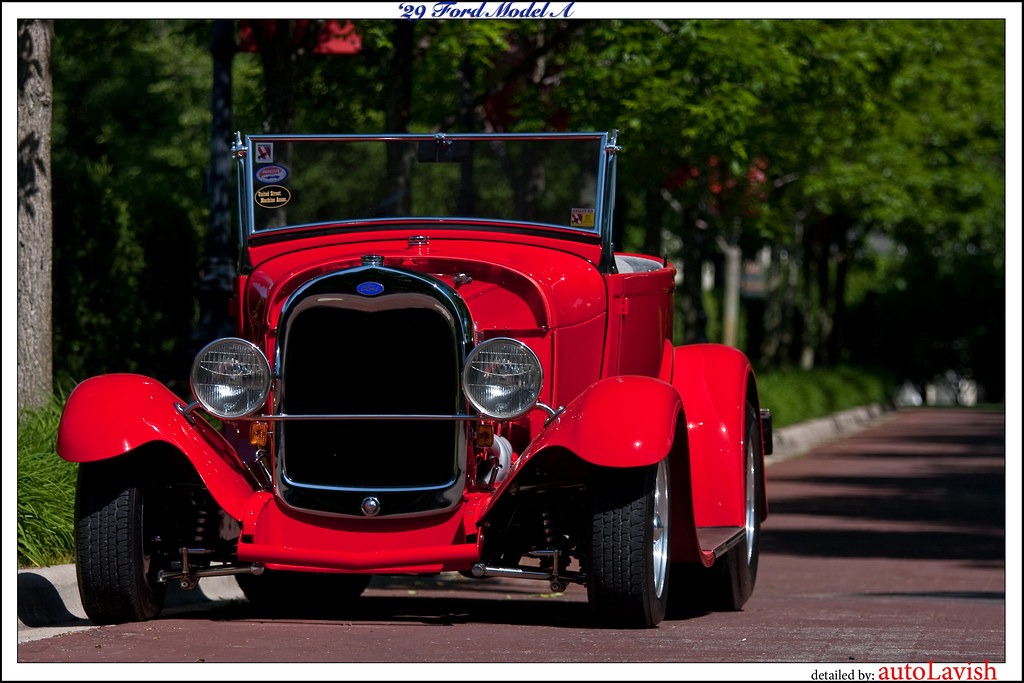
The owners contact us to do a little work on the vehicle. They are undecided to sell, but know the car could not be shown in its current state to fetch top dollar. We are scheduled for 8 hours.
Then we arrived on location and see this: the car has its own room! Climate controlled, secure, and up on show stands 24/7. It is surrounded by trophies, medals, and other era specific car paraphernalia. Best of show, Best in Class, Best in... they go on and on. Impressive!




Getting ready to work, the owner pulled it out in the sun so we would have the chance to look everything over once last time prior to getting started.

At this time we made subtle changes to our plan of attack to help streamline our process. The engine had some overflow from a hot radiator leak at one point we were to take care of, and while at it we were scheduled to detail the rest of the engine bay. Due to the lay-out, everything would have to be washed by hand using spray bottles, microfiber towels, cotton swabs, brushes, etc.





Starting on the cool engine with a light dilution of Meguiar's All Purpose Cleaner Plus, brushes were handy to allow for physical agitation which always goes a long way to break up residue, grime, and dirt. As I got started, Jacob continued to get the E-Z Up into action as the outside temperature was rising very quickly. Once everything was set to go, I helped to place and secure the tent so we could continue working.





Spark plugs/boots/wires:






Jacob gently wiped off residue of the Optimum No Rinse solution that was used to flush away the loosened dirt and grime along with the All Purpose Cleaner residue. Everything was then wiped dry with a microfiber towel.

Sacrificial cotton swabs:

Around 90 minutes later, everything was looking much better:









Next, we started working with the paint. The roadster was kept relatively clean, but needed a light washing before clay and polishing could commence. Even without a wash, it was easy to see the reason the owner came to us: to correct some significant Random Isolated Deep Scratches and Swirls that accumulated over the years from car show wipe downs, washes, and a few road trips.






The sun was in full force, and it is always important to avoid working in direct heat. To prove the difference even a few minutes of shade can make, we used an infrared thermometer to take temperature readings.
Jacob taking readings:

One-hundred fourteen and a half degrees at 10:27AM

So we pulled shade over it:

Now we have a max temperature reading of 76 degrees at 10:36AM - 9 minutes after the first set of readings, let alone the time it took to move the pop-up tent.

Testing the local water for dissolved solids helped us decide it would be OK to use it to wash the car.

The car was built solid: it is a driver and not a museum piece, so we opted for a garden hose version of the foam gun in addition to a rinse bucket with grit guard method.
Carefully foamed with the foam "gun":




And careful rinsing:

Blow dried:


Polishing combinations were determined using the trunk: a nice, consistently sloping (but straight) surface to perform inspections on, with adequate surface area to try multiple polishes, pads, backing plates, machines, and techniques.






The lucky winner for the cutting was the 3M UK green pad under 3M grey ultra-soft foam backing plate on the Flex. The soft backing plate allowed less pad marring then the 3M yellow foam backing plate, and also allowed the 3M pad to contour to the shape of the panel easier. The Makita is much smoother and better suited for finer work, but the Flex rotary is easier to maneuver on a vehicle with such extreme curves, and allowed for a better cut during the initial polishing stage. The Green UK pads were imported from England at extraordinary cost, but they worked much better than the typical LLC orange in both cutting and finish. The pads did not survive to do another vehicle, but that's the difference in choosing a detailer that lives by low volume, high attention to detail work from one in which "Cost is King."



Still, it would take multiple passes:



Some defects required very careful sanding:



(here the Makita provided enough clearance for the gas cap)



Refining was performed with 3M Ultrafina (UK edition) on the Ultrafina pad using the flexible 3M backing plate which helped to lighten pressure from the pad's edges leaving a perfect finish.

Got Red? The result of the cutting stage, polishing stage, and final refining stage was red bliss



The next day we arrived and started an ONR wash to get any dust off prior to resuming polishing:




Places like the trunk and doors were finished, but areas like the fenders still needed further polishing and / or refining to hone the finish.











While Jacob continued to work some stubborn sections of the hand-painted finish, the interior was due to be freshened up. I had hit up the steering wheel the day before; the leather was dirty from use and needed some light cleaner and patience so I used the Fermani method of leather cleaning:







Today we would continue the cleaning and do some polishing. Here is the steering wheel aluminum before which was then treated with Meguiar's 105:




Look carefully at the steering wheel's clear-coated metal finish and you can see a 50/50 line: left side is done, right side is not polished.

Guages and dash were also polished by hand and then protected with a coat of Blackfire Wet Diamond All Finish Paint Protection sealant:


Rubber air-guards around the front windshield weren't in horrible shape, but needed a little love. Klasse All In One paired with a cotton applicator came to the rescue to provide the abrasive action needed to remove oxidation while adding a bit of protection.


After the Klasse All In One, 1Z (Einszett) Vinyl + Rubber Care and Protectant "Tiefenpfleger" was added to further even out the finish while adding a dose of UV ray protection against future elemental bombardment.

With polishing of the paint complete, we needed to get rid of any excess locked in the crevices. A true professional should never leave evidence of their work outside of the gloss and protection left on a vehcile. We resourced P21S Total Auto Wash and a soft Swissvax boar's hair brush to gently remove polish residue:


Washed, then blow-dried:

With the paint much smother now, blow-drying is much more effective:




Early model Ford's likely did more to popularize automobiles than any other car that has ever been on the market. Henry Ford's Model T was a global hit and the Ford Motor Company was able to sell over 15 million of them worldwide. The car made such a name for itself that even today you can stop by the Henry Ford Museum in Dearborn and learn a few things about Model T repairs and manufacturing. Over one hundred years later, even children know this car's name and significance. By the time 1927 rolled through, the aged Model T was replaced with the slightly more updated Model A which was later replaced by the Model B in 1932.
My own grandfather came to Detroit from Mississippi in search of a job with Ford whom he worked for over many many years before retiring from the company. Some 80+ years after he helped to make the originals, AutoLavish Fine Automobile Detailing would help a Ford Model A Street Rod rearch aesthetic perfection. This is the story of one beautiful Ford that continues to turn heads today.

The owners contact us to do a little work on the vehicle. They are undecided to sell, but know the car could not be shown in its current state to fetch top dollar. We are scheduled for 8 hours.
Then we arrived on location and see this: the car has its own room! Climate controlled, secure, and up on show stands 24/7. It is surrounded by trophies, medals, and other era specific car paraphernalia. Best of show, Best in Class, Best in... they go on and on. Impressive!




Getting ready to work, the owner pulled it out in the sun so we would have the chance to look everything over once last time prior to getting started.

At this time we made subtle changes to our plan of attack to help streamline our process. The engine had some overflow from a hot radiator leak at one point we were to take care of, and while at it we were scheduled to detail the rest of the engine bay. Due to the lay-out, everything would have to be washed by hand using spray bottles, microfiber towels, cotton swabs, brushes, etc.





Starting on the cool engine with a light dilution of Meguiar's All Purpose Cleaner Plus, brushes were handy to allow for physical agitation which always goes a long way to break up residue, grime, and dirt. As I got started, Jacob continued to get the E-Z Up into action as the outside temperature was rising very quickly. Once everything was set to go, I helped to place and secure the tent so we could continue working.





Spark plugs/boots/wires:






Jacob gently wiped off residue of the Optimum No Rinse solution that was used to flush away the loosened dirt and grime along with the All Purpose Cleaner residue. Everything was then wiped dry with a microfiber towel.

Sacrificial cotton swabs:

Around 90 minutes later, everything was looking much better:









Next, we started working with the paint. The roadster was kept relatively clean, but needed a light washing before clay and polishing could commence. Even without a wash, it was easy to see the reason the owner came to us: to correct some significant Random Isolated Deep Scratches and Swirls that accumulated over the years from car show wipe downs, washes, and a few road trips.






The sun was in full force, and it is always important to avoid working in direct heat. To prove the difference even a few minutes of shade can make, we used an infrared thermometer to take temperature readings.
Jacob taking readings:

One-hundred fourteen and a half degrees at 10:27AM

So we pulled shade over it:

Now we have a max temperature reading of 76 degrees at 10:36AM - 9 minutes after the first set of readings, let alone the time it took to move the pop-up tent.

Testing the local water for dissolved solids helped us decide it would be OK to use it to wash the car.

The car was built solid: it is a driver and not a museum piece, so we opted for a garden hose version of the foam gun in addition to a rinse bucket with grit guard method.
Carefully foamed with the foam "gun":




And careful rinsing:

Blow dried:


Polishing combinations were determined using the trunk: a nice, consistently sloping (but straight) surface to perform inspections on, with adequate surface area to try multiple polishes, pads, backing plates, machines, and techniques.






The lucky winner for the cutting was the 3M UK green pad under 3M grey ultra-soft foam backing plate on the Flex. The soft backing plate allowed less pad marring then the 3M yellow foam backing plate, and also allowed the 3M pad to contour to the shape of the panel easier. The Makita is much smoother and better suited for finer work, but the Flex rotary is easier to maneuver on a vehicle with such extreme curves, and allowed for a better cut during the initial polishing stage. The Green UK pads were imported from England at extraordinary cost, but they worked much better than the typical LLC orange in both cutting and finish. The pads did not survive to do another vehicle, but that's the difference in choosing a detailer that lives by low volume, high attention to detail work from one in which "Cost is King."



Still, it would take multiple passes:



Some defects required very careful sanding:



(here the Makita provided enough clearance for the gas cap)



Refining was performed with 3M Ultrafina (UK edition) on the Ultrafina pad using the flexible 3M backing plate which helped to lighten pressure from the pad's edges leaving a perfect finish.

Got Red? The result of the cutting stage, polishing stage, and final refining stage was red bliss



The next day we arrived and started an ONR wash to get any dust off prior to resuming polishing:




Places like the trunk and doors were finished, but areas like the fenders still needed further polishing and / or refining to hone the finish.











While Jacob continued to work some stubborn sections of the hand-painted finish, the interior was due to be freshened up. I had hit up the steering wheel the day before; the leather was dirty from use and needed some light cleaner and patience so I used the Fermani method of leather cleaning:







Today we would continue the cleaning and do some polishing. Here is the steering wheel aluminum before which was then treated with Meguiar's 105:




Look carefully at the steering wheel's clear-coated metal finish and you can see a 50/50 line: left side is done, right side is not polished.

Guages and dash were also polished by hand and then protected with a coat of Blackfire Wet Diamond All Finish Paint Protection sealant:


Rubber air-guards around the front windshield weren't in horrible shape, but needed a little love. Klasse All In One paired with a cotton applicator came to the rescue to provide the abrasive action needed to remove oxidation while adding a bit of protection.


After the Klasse All In One, 1Z (Einszett) Vinyl + Rubber Care and Protectant "Tiefenpfleger" was added to further even out the finish while adding a dose of UV ray protection against future elemental bombardment.

With polishing of the paint complete, we needed to get rid of any excess locked in the crevices. A true professional should never leave evidence of their work outside of the gloss and protection left on a vehcile. We resourced P21S Total Auto Wash and a soft Swissvax boar's hair brush to gently remove polish residue:


Washed, then blow-dried:

With the paint much smother now, blow-drying is much more effective:



#2
I began going crazy with the protection at this point. On a car of this caliber or any other vehicle your eyes naturally will come to rest on the most unsightly part of the car: anything you might leave untouched/untreated will stand out like a sore thumb when all other parts look flawless.
The engine compartment had a red piece of vinyl going around it to act as a "buffer" to the hood that was currently removed. For this, 1Z (Einszett) Vinyl + Rubber Care and Protectant "Tiefenpfleger" was used to treat the finish for the same reason it was used on the rubber air-guard strip: adding UV ray protection along with evening out the finish.




Every little rubber gasket such as those that attachd the headlamp housings to the body of the vehicle and more were carefully treated as to not distrub the perfected clear-coat.




Rubberized bump stops inside the trunk area treated:


The running boards were cleaned thoroughly early on in the detailing process, so all we had left was to gently treat them to even out the finish. Meguiar's Exterior Trim Detailer in action:


The metal hood struts were treated with Blackfire Wet Diamond All Metal Sealant while the painted firewall was treated with Blackfire Wet Diamond All Finish Paint Protection sealant:

Painted trunk dampers= Blackfire Wet Diamond All Finish Paint Protection



All jambs... yes, all jambs. This means taking the time to apply Blackfire via cotton-swab to the trunk latch, water channels, and other painted surfaces as well.



Here you can see the same rubber bump-stop that was treated prior with 1Z (Einszett) Vinyl + Rubber Care and Protectant "Tiefenpfleger" has a beautiful even and dark finish, the painted surface around it however was yet to be treated until now.



Gently wiping off the hazed-over sealant revieled a beautiful glossy shine that would also allow for future cleanings of this area to be that much easier through-out the next years of the vehicle's life. Compare the wiped off side to the hazed over side:

Interior stuff went something like this: if it was metal, it was protected with Blackfire Wet Diamond All Metal Sealant. If it was rubber or plastic, it was treated with 1Z (Einszett) Vinyl + Rubber Care and Protectant "Tiefenpfleger"




The grill, headlamp housings, turn signals, and windshield bracket were polished by hand and then sealed with Blackfire Metal sealant like other metal had been.




Semi-Afters:
Still left were a few loose ends including a few more coats of sealant. While we originally were planning on a modest 2 coats, we would end up more than doubling that number as some plans changed shortly after these photos were snapped.













Tight and true reflections that only looked better as you poured more and more light onto the finish (one of those times I wished there were 3 or 4 suns to show off the absolute perfection of this roadster).
It was at this point, the point we knew our contract with this car was up, that the owner mentioned he had never seen the car look this good; even when freshly built. Since it is a show car, and he wanted to show off ALL the car, he asked us what it would take to bring "the rest of the car" up to the level the exterior was now in. With an increased budget, we decided we would go crazy and not only make this something for him to show off, but to make this as thorough of a job as possible . The owner lifted the restraints on the detailing budget and we went to work.
We decided to start going crazy: do everything we could find left and see where it took us. We would go beyond the ceiling. It didn't matter. Nothing else mattered. We would spend another half a week working on this beauty, in very high spirits, loving every second of it. It is very rewarding to be able to go crazy on a car for a customer who really appreciated it!
The next time we were back, the wheels were being dismounted. The owner placed the car in a carpeted area of the building for our comfort. We planned a Michael Angelo style upside-down work day (not only did he paint the famous Sistine Chapel, like Jacob and I; he was left handed). One of the rear wheel lugs had seized, and required some work to remove, so we finished the rear section another day.



We started by wiping off the heavy stuff, then spraying cleaners, brushing, and rinsing via an Optimum No Rinse solution in spray bottles. Once wiped dry, items were gone over once more.
Grease build up:



Brake components were treated with Chemical Guy's Sticky Gel wheel cleaner




Behind and around the wheel hub:

Inside the rotors there was quite a bit of build up so each individual fin would thoroughly be gone over to ensure a beautiful clean finish.

Using the Optimum No Rinse solution to flush away the Sticky Gel:

A toothbrush came in handy to agitate some hard to reach places: nooks and crannies, cotter pins, etc.


After being rinsed with our Optimum No Rinse solution, we used compressed air to help dry all the various parts which would help against water marks.

Finally cleaned and dry, Detailer's Pride spray sealant was used to dress and protect the painted portions in the wheel well.




Clean! Just look at the inside of those rotors!

Optimum Opti-Seal was used on the brake calipers, behind the rotors, on the springs, control arms, on the painted black portion of the wheel hub, and the various other pieces of the suspension.


Collected water after working on one corner:


The hood presented some challenges due to its unusual shape and lack of rigidity. We combated the problem using 1/4th inch painter's tape to protect edges and a soft but supportive roll of packaging material.


Getting to work!

Clarity coming back under various types of lights.


Half of the hood done, half to go. Here you can see the difference in gloss and clarity gained from proper polishing techniques.

Again - the section of the hood that is closest is corrected while the section in the back has yet to be cared for.

Afters for the day.
Many parts were hand cleaned (APC 10:1, Optimum No Rinse, car wash shampoo, etc), hand polished (Meguiar's 105/205), then sealed with the same Detailer's Pride spray sealant as used on the wheel wells. It was time consuming and not always easy, but the results left a smile on our faces for sure.





The black drive shaft came out nicely after some polishing by hand - here you can see it looks like a mirror:




The coat of Blackfire Wet Diamond that was applied earlier in the day was taken off, and we retired from our labor until the next day when we'd continue on the rear wheels, suspension, and other parts that would be lifted off the ground making them accessable.


Wiped off to reveal the deepest red I've set my eyes upon:

The next day we would tackle the rear portion of the underbody and the rear wheels, now removed from vehicle in the same manner we had perviously done on the fronts. Most of the same products were used - there'd be no way around taking the time to simply do things right. The results spoke for themselves...
Rear quarters:



Jacob took care of the rear differential housing using more Meguiar's 105+205 by hand. The results were stunning and unlike any gloss I've ever seen on a differential case.


The mag wheels posed an issue to us. We knew we needed to clean them even further to improve the look of the finish, but wanted to know if we could cut down on time using the Mother's Powerball (did OK actually):

By hand ending up being not only more effective, it was more thorough. While the Powerball cut down on time, it did so at the expense of the finish looking as good as possible. We started cleaning the oxidation off the wheels with P21S Polishing Soap:

Then used some Meg's Mag & Aluminum Polish:


P21S PS versus Polished:

P21S PS versus uncleaned:

Polished versus uncleaned:

Undone:

Done:

Done and Undone:

If you hadn't notice, those pictures were of the back of the wheels. The owner had some points taken off at a judging for dirty back-sides of the wheels (they drove the car there!) at a show not too long ago. We would make sure it never happened again. The Mag & Aluminum polishing was used on the fronts as well, and once done, the wheels looked outstanding.
Here is the front of the front wheel:

The next day, with the rear wheels finally removed, we would finish. I got to work:



Jacob followed my efforts of initial cleaning with P21S Polishing Soap with the Meguiar's Mag & Aluminum polish.

Once he finished, I got going with caring for the nasty tires that had build-up of old dressings and grime. They were scrubbed clean with a little help from Meguiar's Super Degreaser.




Front sides of rear wheels:



That was the end of the billable work. We totaled about 25+ hours (50+ man-hours) on the vehicle, talked it over with the owner and he happily wrote us a check with a tip included. The money is nice, but the satisfaction of bringing the full potential out of a beautiful car is something that money can't touch.
A few months later, after the Michigan winter had passed and schedules converged with the photographer's, we paid a visit to go over the vehicle in prep for the photo shoot. Oh yes, of course there would be a photo shoot! We arranged to have this vehicle shot by the same guy that did the press release picture's for some of Roush's Mustangs: Andrew G Photog.
We arrived at the vehicle's quarters and found it unmolested. It had not moved since we finished with it last Fall. I'm not even sure if it had even been started over the last few months. We went over the finish with an Optimum No Rinse wash solution and ****-style microfiber towels to prepped for a very special "Last Step Process" dispite the paint already wearing 6 layers of sealant.




The engine compartment had a red piece of vinyl going around it to act as a "buffer" to the hood that was currently removed. For this, 1Z (Einszett) Vinyl + Rubber Care and Protectant "Tiefenpfleger" was used to treat the finish for the same reason it was used on the rubber air-guard strip: adding UV ray protection along with evening out the finish.




Every little rubber gasket such as those that attachd the headlamp housings to the body of the vehicle and more were carefully treated as to not distrub the perfected clear-coat.




Rubberized bump stops inside the trunk area treated:


The running boards were cleaned thoroughly early on in the detailing process, so all we had left was to gently treat them to even out the finish. Meguiar's Exterior Trim Detailer in action:


The metal hood struts were treated with Blackfire Wet Diamond All Metal Sealant while the painted firewall was treated with Blackfire Wet Diamond All Finish Paint Protection sealant:

Painted trunk dampers= Blackfire Wet Diamond All Finish Paint Protection



All jambs... yes, all jambs. This means taking the time to apply Blackfire via cotton-swab to the trunk latch, water channels, and other painted surfaces as well.



Here you can see the same rubber bump-stop that was treated prior with 1Z (Einszett) Vinyl + Rubber Care and Protectant "Tiefenpfleger" has a beautiful even and dark finish, the painted surface around it however was yet to be treated until now.



Gently wiping off the hazed-over sealant revieled a beautiful glossy shine that would also allow for future cleanings of this area to be that much easier through-out the next years of the vehicle's life. Compare the wiped off side to the hazed over side:

Interior stuff went something like this: if it was metal, it was protected with Blackfire Wet Diamond All Metal Sealant. If it was rubber or plastic, it was treated with 1Z (Einszett) Vinyl + Rubber Care and Protectant "Tiefenpfleger"




The grill, headlamp housings, turn signals, and windshield bracket were polished by hand and then sealed with Blackfire Metal sealant like other metal had been.




Semi-Afters:
Still left were a few loose ends including a few more coats of sealant. While we originally were planning on a modest 2 coats, we would end up more than doubling that number as some plans changed shortly after these photos were snapped.













Tight and true reflections that only looked better as you poured more and more light onto the finish (one of those times I wished there were 3 or 4 suns to show off the absolute perfection of this roadster).
It was at this point, the point we knew our contract with this car was up, that the owner mentioned he had never seen the car look this good; even when freshly built. Since it is a show car, and he wanted to show off ALL the car, he asked us what it would take to bring "the rest of the car" up to the level the exterior was now in. With an increased budget, we decided we would go crazy and not only make this something for him to show off, but to make this as thorough of a job as possible . The owner lifted the restraints on the detailing budget and we went to work.
We decided to start going crazy: do everything we could find left and see where it took us. We would go beyond the ceiling. It didn't matter. Nothing else mattered. We would spend another half a week working on this beauty, in very high spirits, loving every second of it. It is very rewarding to be able to go crazy on a car for a customer who really appreciated it!
The next time we were back, the wheels were being dismounted. The owner placed the car in a carpeted area of the building for our comfort. We planned a Michael Angelo style upside-down work day (not only did he paint the famous Sistine Chapel, like Jacob and I; he was left handed). One of the rear wheel lugs had seized, and required some work to remove, so we finished the rear section another day.



We started by wiping off the heavy stuff, then spraying cleaners, brushing, and rinsing via an Optimum No Rinse solution in spray bottles. Once wiped dry, items were gone over once more.
Grease build up:



Brake components were treated with Chemical Guy's Sticky Gel wheel cleaner




Behind and around the wheel hub:

Inside the rotors there was quite a bit of build up so each individual fin would thoroughly be gone over to ensure a beautiful clean finish.

Using the Optimum No Rinse solution to flush away the Sticky Gel:

A toothbrush came in handy to agitate some hard to reach places: nooks and crannies, cotter pins, etc.


After being rinsed with our Optimum No Rinse solution, we used compressed air to help dry all the various parts which would help against water marks.

Finally cleaned and dry, Detailer's Pride spray sealant was used to dress and protect the painted portions in the wheel well.




Clean! Just look at the inside of those rotors!

Optimum Opti-Seal was used on the brake calipers, behind the rotors, on the springs, control arms, on the painted black portion of the wheel hub, and the various other pieces of the suspension.


Collected water after working on one corner:


The hood presented some challenges due to its unusual shape and lack of rigidity. We combated the problem using 1/4th inch painter's tape to protect edges and a soft but supportive roll of packaging material.


Getting to work!

Clarity coming back under various types of lights.


Half of the hood done, half to go. Here you can see the difference in gloss and clarity gained from proper polishing techniques.

Again - the section of the hood that is closest is corrected while the section in the back has yet to be cared for.

Afters for the day.
Many parts were hand cleaned (APC 10:1, Optimum No Rinse, car wash shampoo, etc), hand polished (Meguiar's 105/205), then sealed with the same Detailer's Pride spray sealant as used on the wheel wells. It was time consuming and not always easy, but the results left a smile on our faces for sure.





The black drive shaft came out nicely after some polishing by hand - here you can see it looks like a mirror:




The coat of Blackfire Wet Diamond that was applied earlier in the day was taken off, and we retired from our labor until the next day when we'd continue on the rear wheels, suspension, and other parts that would be lifted off the ground making them accessable.


Wiped off to reveal the deepest red I've set my eyes upon:

The next day we would tackle the rear portion of the underbody and the rear wheels, now removed from vehicle in the same manner we had perviously done on the fronts. Most of the same products were used - there'd be no way around taking the time to simply do things right. The results spoke for themselves...
Rear quarters:



Jacob took care of the rear differential housing using more Meguiar's 105+205 by hand. The results were stunning and unlike any gloss I've ever seen on a differential case.


The mag wheels posed an issue to us. We knew we needed to clean them even further to improve the look of the finish, but wanted to know if we could cut down on time using the Mother's Powerball (did OK actually):

By hand ending up being not only more effective, it was more thorough. While the Powerball cut down on time, it did so at the expense of the finish looking as good as possible. We started cleaning the oxidation off the wheels with P21S Polishing Soap:

Then used some Meg's Mag & Aluminum Polish:


P21S PS versus Polished:

P21S PS versus uncleaned:

Polished versus uncleaned:

Undone:

Done:

Done and Undone:

If you hadn't notice, those pictures were of the back of the wheels. The owner had some points taken off at a judging for dirty back-sides of the wheels (they drove the car there!) at a show not too long ago. We would make sure it never happened again. The Mag & Aluminum polishing was used on the fronts as well, and once done, the wheels looked outstanding.
Here is the front of the front wheel:

The next day, with the rear wheels finally removed, we would finish. I got to work:



Jacob followed my efforts of initial cleaning with P21S Polishing Soap with the Meguiar's Mag & Aluminum polish.

Once he finished, I got going with caring for the nasty tires that had build-up of old dressings and grime. They were scrubbed clean with a little help from Meguiar's Super Degreaser.




Front sides of rear wheels:



That was the end of the billable work. We totaled about 25+ hours (50+ man-hours) on the vehicle, talked it over with the owner and he happily wrote us a check with a tip included. The money is nice, but the satisfaction of bringing the full potential out of a beautiful car is something that money can't touch.
A few months later, after the Michigan winter had passed and schedules converged with the photographer's, we paid a visit to go over the vehicle in prep for the photo shoot. Oh yes, of course there would be a photo shoot! We arranged to have this vehicle shot by the same guy that did the press release picture's for some of Roush's Mustangs: Andrew G Photog.
We arrived at the vehicle's quarters and found it unmolested. It had not moved since we finished with it last Fall. I'm not even sure if it had even been started over the last few months. We went over the finish with an Optimum No Rinse wash solution and ****-style microfiber towels to prepped for a very special "Last Step Process" dispite the paint already wearing 6 layers of sealant.




#3
A vehicle that has recieved so much special attention deserved to out-class any past project of ours. This 1929 Ford Roadster deserved the very best.












Zymol Atlantique is unlike any wax I've previously used or smelled. The aroma was hypnotizing:

The brand might encourage its users to only apply the "estate glaze" by hand, but we chose the much softer Lake Country Gold Concours applicator pad in order to achieve a thinner and more consistent finish.






The reveal:









A few days later, we would meet up with the owner and the photographer at a few locations very early in order to take advantage of the soft light. The weather said 0% chance of precipitation, so we knew this is the day we were waiting on for all these months. There was no way we were going to take this car out to get rained on!
The first location was next to a lake:



After getting a cool 40-60 pictures, the first boaters began to arrive to take advantage of the beautiful weather and perfect time to fish. As they drove uncomfortably close to the Roadster (within 20 feet ), we decided to move to the next location:
), we decided to move to the next location:




Arriving at the next location, another lake, the photographer started setting up his strobes. You do know that Michigan has over 15,300 lakes right? Sorry Minnesota










Time to button up and hit the next location:


The next location was further from the water, some muted colors and angles, textures and contrast. Nice backdrop for the most intense of reds:










... and lets get to the last location:

The last location for shooting of the day was down the road a little, a proper place for the day (Memorial Day): The Grosse Pointe War Memorial.














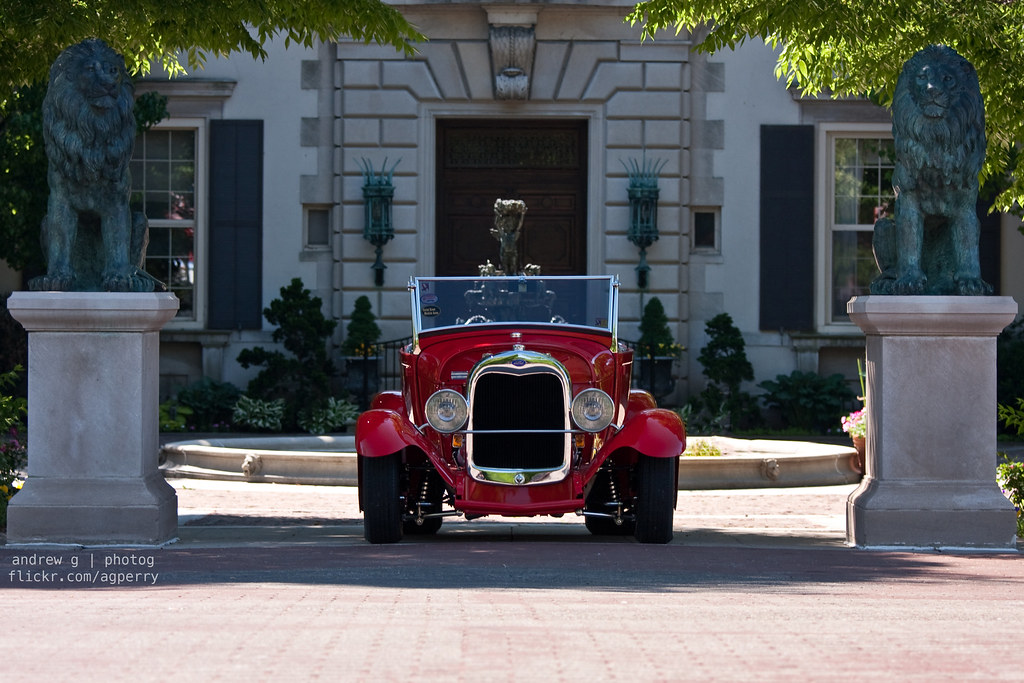
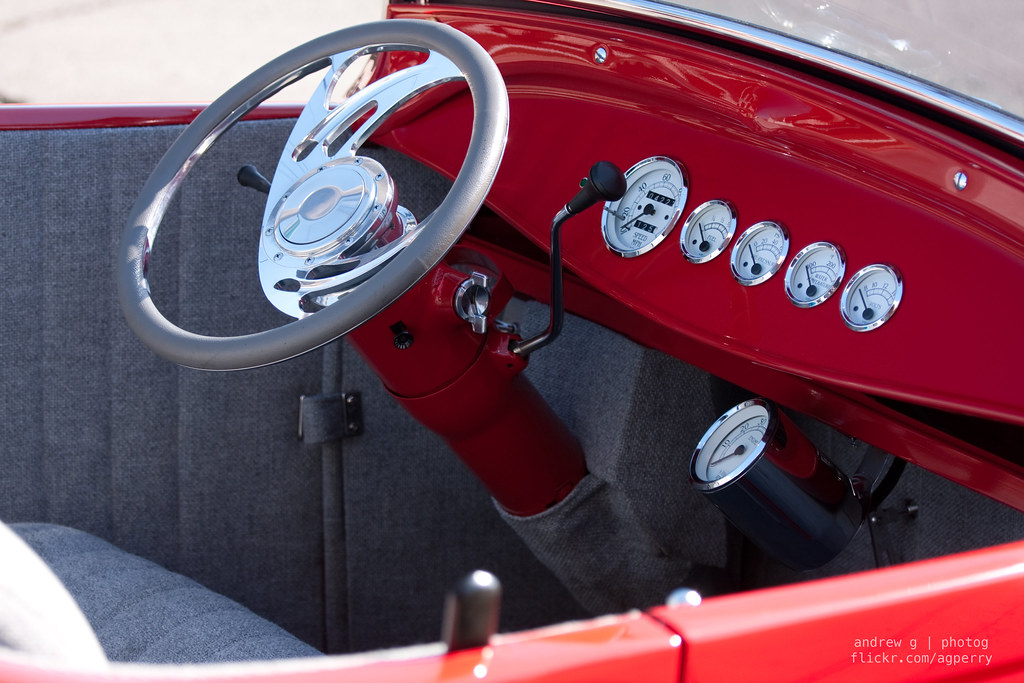
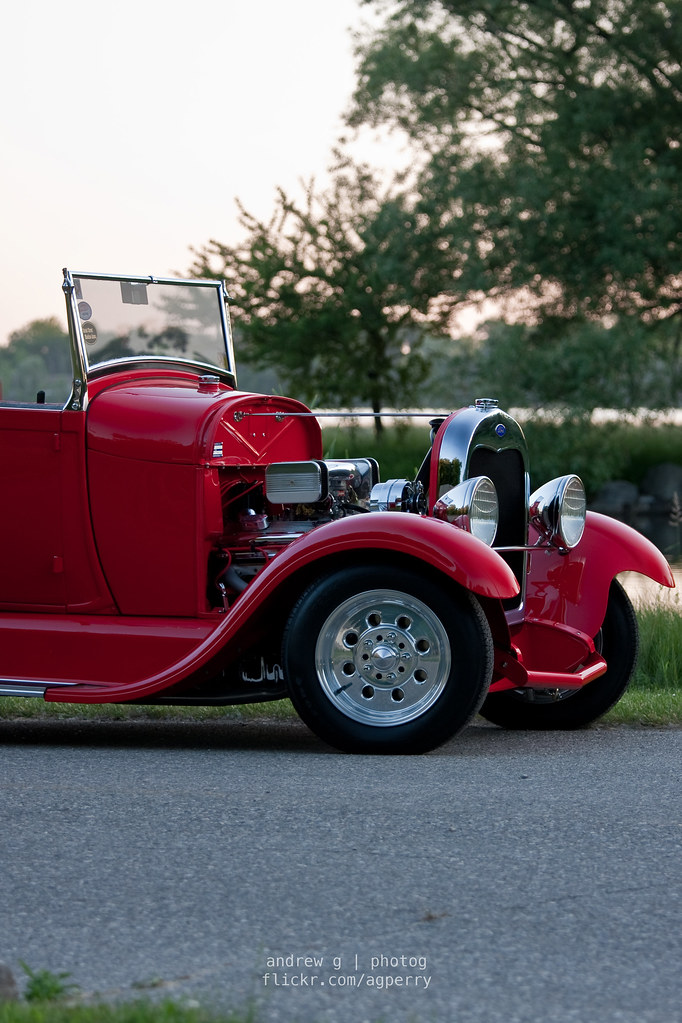
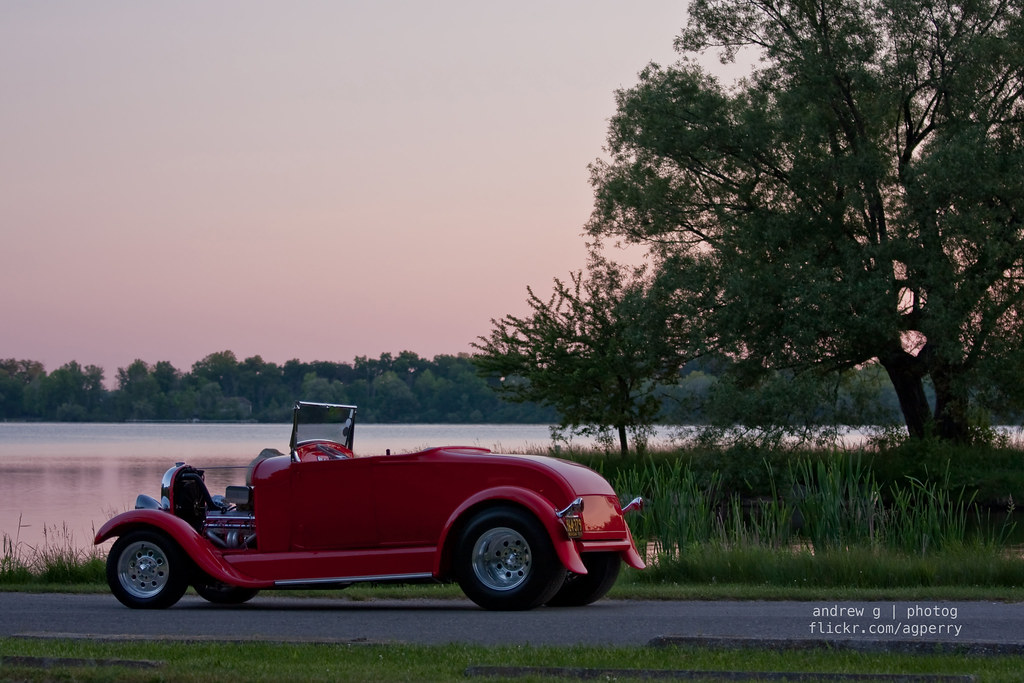

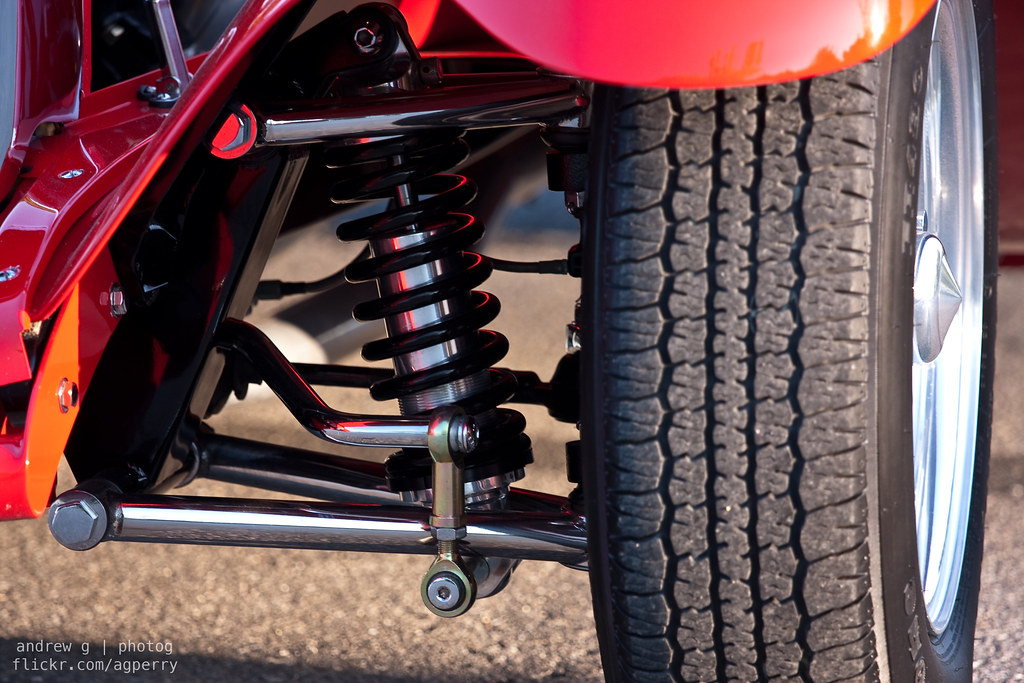
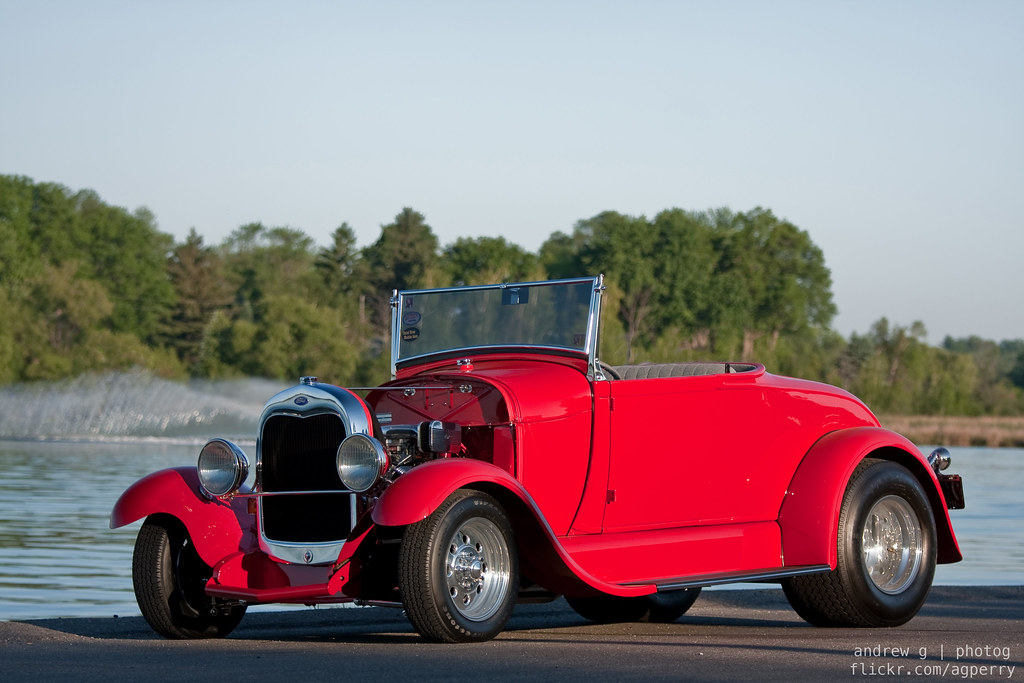
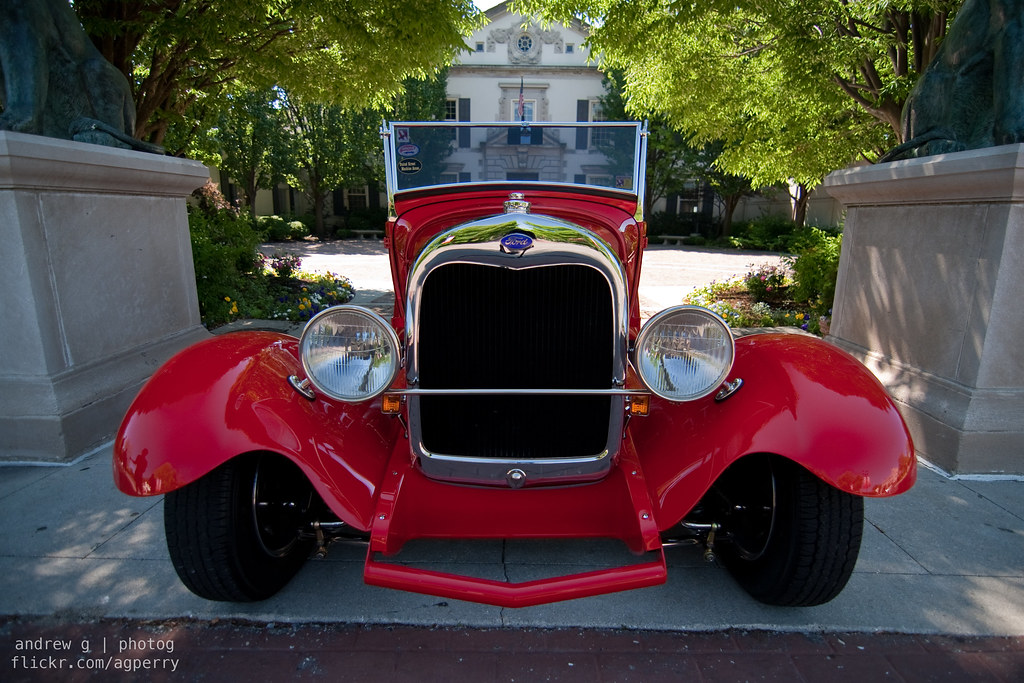
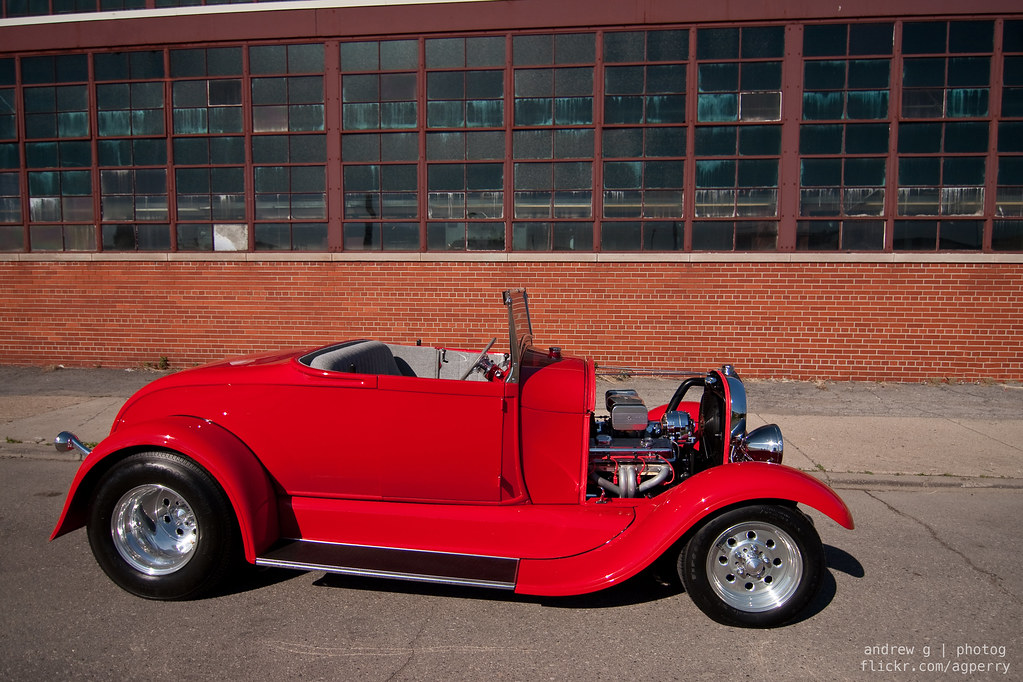
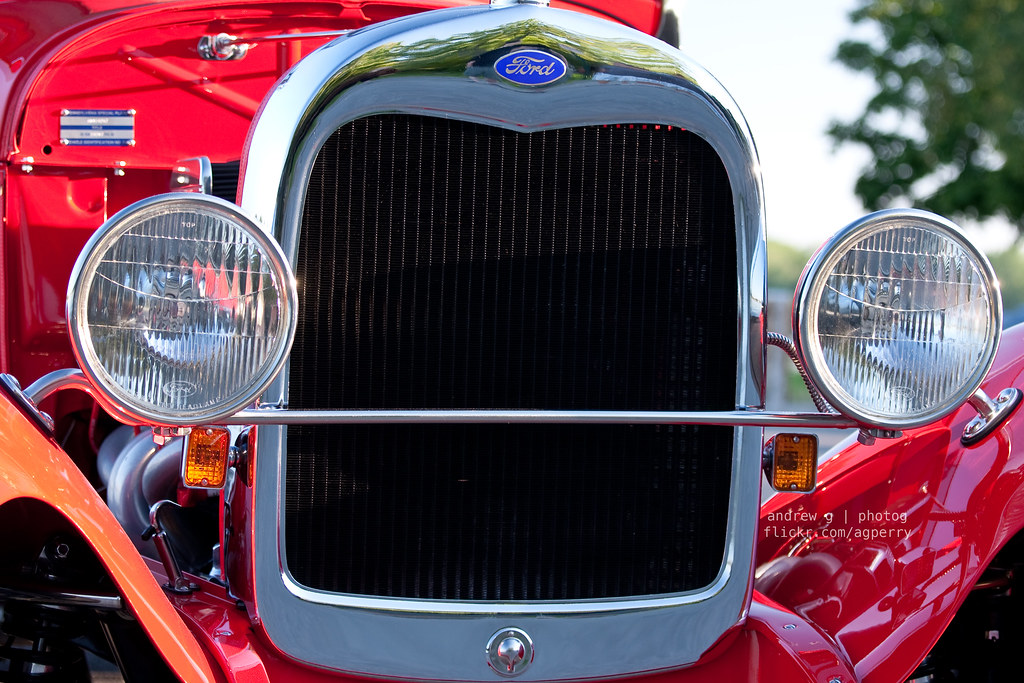
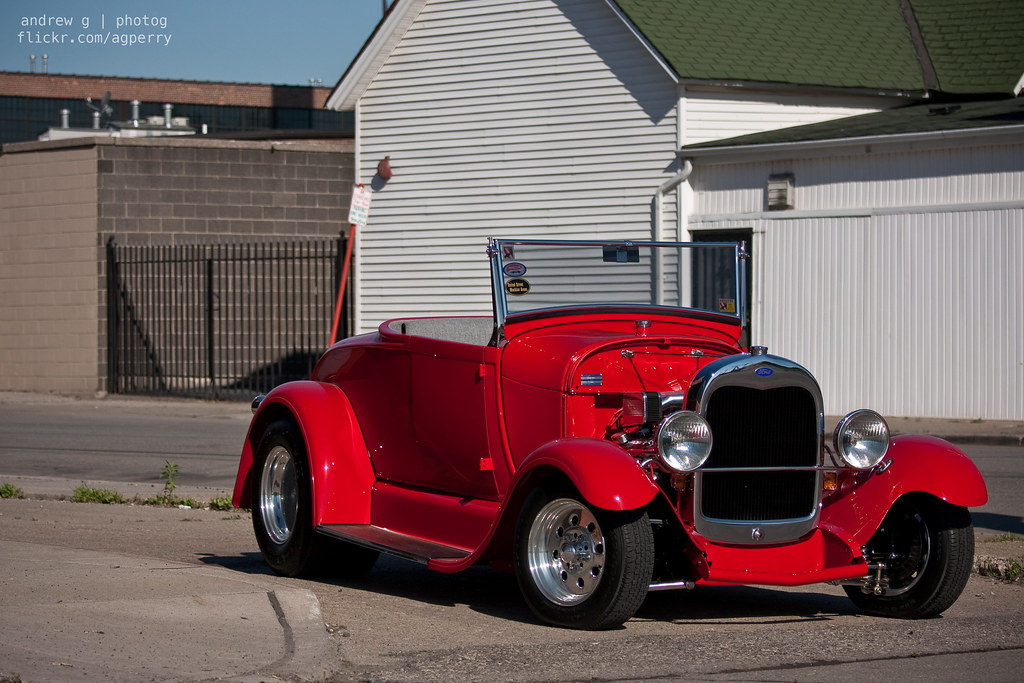
Thank you for taking the time to walk through our journey. It was an incredible experience for us: we're proud and fortunate to have been able to take part of this stunning car's good looks, and to have worked on a car who's nameplate has done more for auto enthusiasts than we could ever imagine doing.
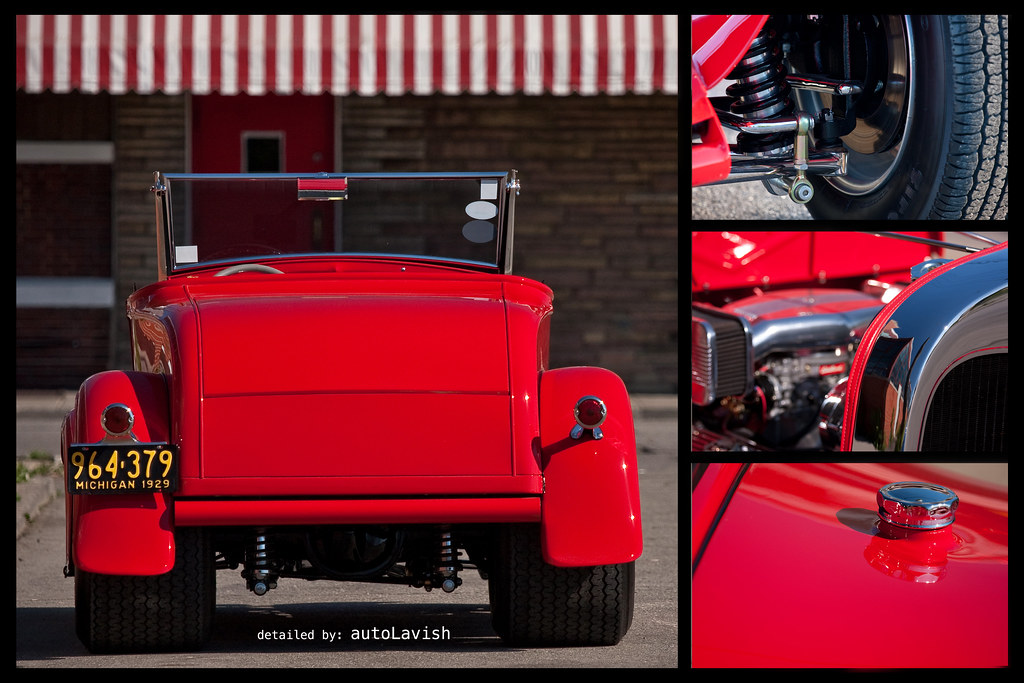












Zymol Atlantique is unlike any wax I've previously used or smelled. The aroma was hypnotizing:

The brand might encourage its users to only apply the "estate glaze" by hand, but we chose the much softer Lake Country Gold Concours applicator pad in order to achieve a thinner and more consistent finish.






The reveal:









A few days later, we would meet up with the owner and the photographer at a few locations very early in order to take advantage of the soft light. The weather said 0% chance of precipitation, so we knew this is the day we were waiting on for all these months. There was no way we were going to take this car out to get rained on!
The first location was next to a lake:



After getting a cool 40-60 pictures, the first boaters began to arrive to take advantage of the beautiful weather and perfect time to fish. As they drove uncomfortably close to the Roadster (within 20 feet
 ), we decided to move to the next location:
), we decided to move to the next location:



Arriving at the next location, another lake, the photographer started setting up his strobes. You do know that Michigan has over 15,300 lakes right? Sorry Minnesota











Time to button up and hit the next location:


The next location was further from the water, some muted colors and angles, textures and contrast. Nice backdrop for the most intense of reds:










... and lets get to the last location:

The last location for shooting of the day was down the road a little, a proper place for the day (Memorial Day): The Grosse Pointe War Memorial.














Originally Posted by Andrew G Photog
Over 8 months after we initially talked about it, a date had finally been set...the shoot was on! I contacted the owners to discuss any possible ideas they might have for the photos. I've found that some owners have that, "special place" they just HAVE to have, while others want to leave it in the hands of the professional. After a brief conversation with the owners, they let me know this was a case of the latter. Knowing I had complete creative control, I started brainstorming possible locations for the car. After 3 days of driving around scouting, I contacted AutoLavish and the owners with my location ideas. We agreed on a starting location and time (6am), and prepared to meet in the coming days when weather would be ideal.
Originally Posted by Andrew G Photog
Red can be a tricky color to shoot. I had to make sure final locations had colors that complimented the car. I tried to avoid busy and distracting backgrounds as they tend to take away final product.
Lens selection was another consideration. I like to shoot cars from a distance, which meant my 70-200 f/4 IS was used for a lot of these photos. I really enjoy the natural depth that is achieved when shooting a car @ 200mm. For the wide-angle shots I used my Tokina 11-16 f/2,8. For all of the shots I used a circular polarizer, as it helps to cut through the glare that the sun likes to create on a shiny, freshly polished surface.
Lighting is always the key to getting "the" shot. Not everyone can afford strobes, which is why you're lucky the sun is free. Use that early morning sun and late night light when you can. It is soft, even, and allows for some nice shadows to accentuate the lines of a car. I did bring my strobes to the shoot, and while we set them up once, we didn't end up using them for any of the photos. I'm a huge fan of natural lighting, but having a backup plan never hurts as you never know when you're going to need the extra light.
These were just few of the things that need to be taken into consideration.
Lens selection was another consideration. I like to shoot cars from a distance, which meant my 70-200 f/4 IS was used for a lot of these photos. I really enjoy the natural depth that is achieved when shooting a car @ 200mm. For the wide-angle shots I used my Tokina 11-16 f/2,8. For all of the shots I used a circular polarizer, as it helps to cut through the glare that the sun likes to create on a shiny, freshly polished surface.
Lighting is always the key to getting "the" shot. Not everyone can afford strobes, which is why you're lucky the sun is free. Use that early morning sun and late night light when you can. It is soft, even, and allows for some nice shadows to accentuate the lines of a car. I did bring my strobes to the shoot, and while we set them up once, we didn't end up using them for any of the photos. I'm a huge fan of natural lighting, but having a backup plan never hurts as you never know when you're going to need the extra light.
These were just few of the things that need to be taken into consideration.











Originally Posted by Andrew G Photog
I Hope you enjoy the photos as much as I enjoyed shooting them!

Thread
Thread Starter
Forum
Replies
Last Post




